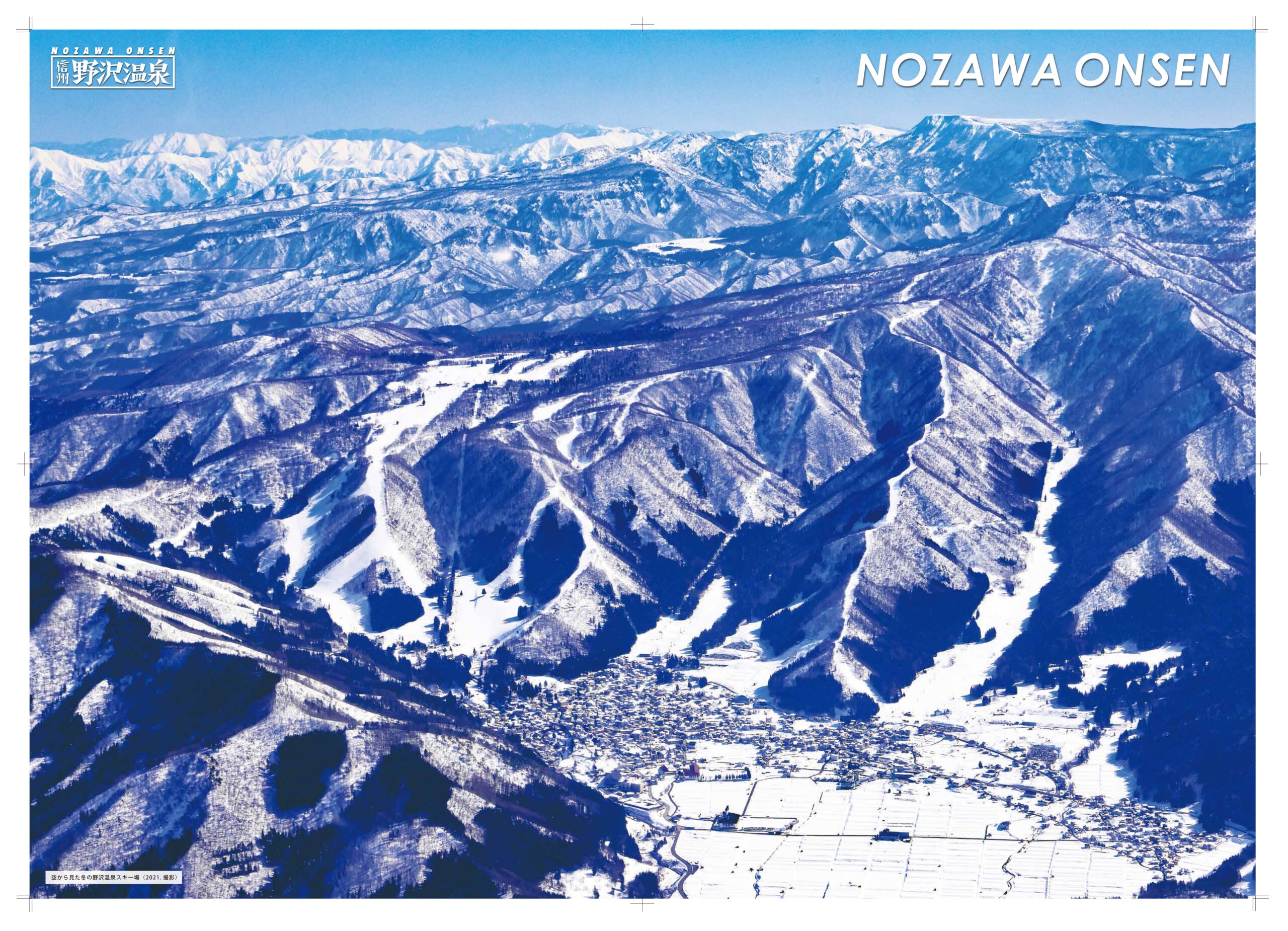Location and history

Nozawa Onsen Village is located in the northern part of Nagano Prefecture, bordering Kijimadaira Village on the ridge of Mt. Kenashi on the south side, and bordering Iiyama City on the west side across the Chikuma River.
The north and east sides border Sakae Village from the ridge boundary of Mt. Takakura to the eastern slope of Mt. Kenashi.
The altitude ranges from 300 m above sea level at Akashi in the northern part of the village up to 1650m at the summit of Mt. Kenashi.
The terrain is largely rugged and mountainous.
The total area of the village is 57.95km2; East-west 9.1km, north-south 11.5km, and circumference 38.2km.
Forests occupy 50.7% of the village land area (1996 prefectural statistics).
297ha of the village area has been designated as the “Joshinetsu Kogen National Park” because of the natural beauty of the surrounding forests and scenery. Some of this area is included in the ski resort.
The highest point is Mt. Kenashi (1,650m) which rises from the east side of the Mikuni Mountain range, and slopes toward the Chikuma River- the longest river in Japan- which flows from the Japanese alps to the western coast of Japan, and into the Japan sea.

History of Nozawa Onsen

Nozawa Onsen Village first appeared in history as “Yuyama Village” in 1272 in the middle of the Kamakura period, and it is said that there were already 24 established inns operating in the village by the early Edo period.
In the 3rd year of the reign of the Meiji emperor (1870), it is recorded that 24,863 hot spring guests had visited the village over a 5 year period.
From this historical record we know now that Nozawa has prospered as a hot spring resort since ancient times.
The first record of skiing in Nozawa was by a villager who was a student of Iiyama Junior High School in 1897.
The Nozawa Onsen Ski Club was established in 1918, and efforts to promote a village centered around both hot springs and skiing began, with further development of the ski resort to attract skiers.
Improved access to the village made the hosting of numerous ski competitions over the years much more practical for Nozawa Onsen ski area. The Iiyama Railway to Kuwanagawa was opened in 1918 and the Nagano Electric Railway between Yashiro and Kijima in 1914.
Since then the hot spring ski resort has steadily developed.
The village name was changed from Toyosato village to Nozawa Onsen Village in 1953, and merged with Ichikawa Village in 1956 to form the current Nozawa Onsen Village that we know today.
Throughout the 30’s of the Showa era (1955- 1965), the village promoted the development of social infrastructure such as public sewers and roads. And in 1963 the ski resort, including all facilities, became village-run. The development of the tourist destination became a combined effort between the government and local residents.
Since then, it has progressed much further. In February 1971, a sister village arrangement was established with the village of Saint Anton in Austria. Ski teacher and villager exchanges have been held, which has been useful for international goodwill and has helped promote Nozawa Onsen to the world.
Since the Heisei era began (1989), the village has steadily promoted the improvement of the living environment such as continued village road maintenance and improved snow management, agricultural irrigation projects, enhancement of villager welfare facilities, and measures aimed at improving cultural education such as Oboro Tsukiyo no Yakata-Marayama Bunko.
In 1998, Nozawa Onsen Ski Resort was one of the host venues for the Nagano Olympics, and the name of Nozawa Onsen spread worldwide.
The Joshinetsu Expressway interchanges, Shinshu Nakano and Toyota / Iiyama IC (opened 1997), as well the Hokuriku Shinkansen Iiyama station (opened in March 2015), have dramatically improved access from the Tokyo and Nagoya metropolitan areas and beyond, and has also improved the living conditions for villagers and businesses in the area.

